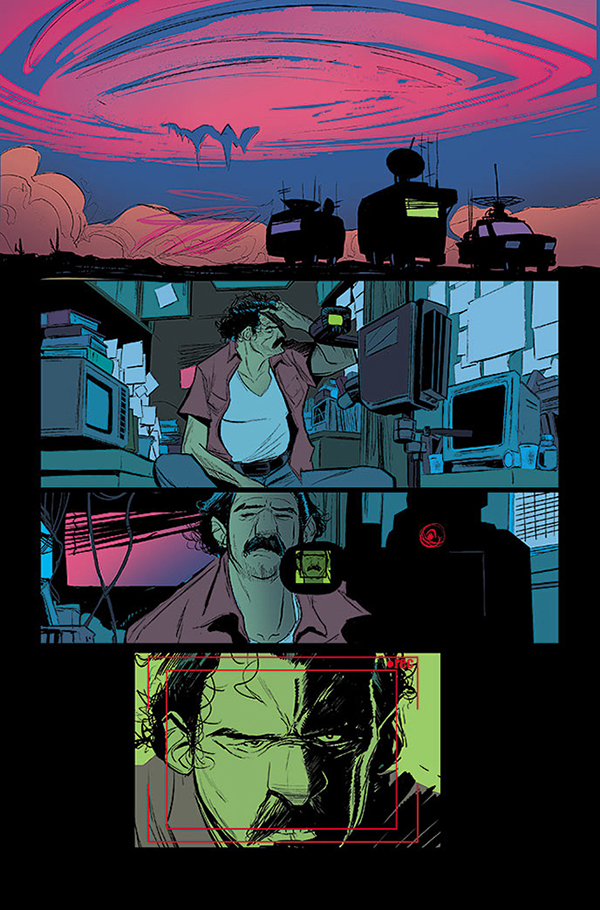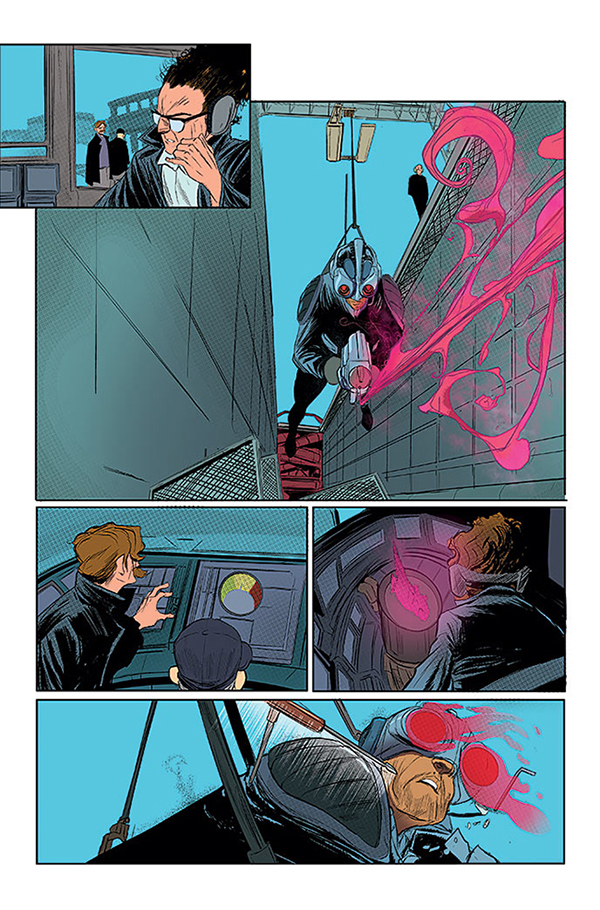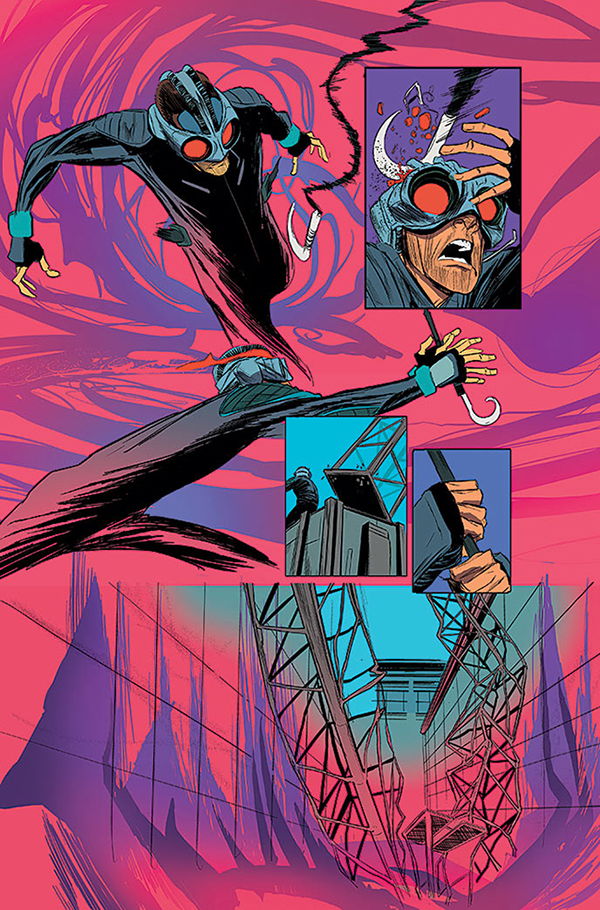FBP: Federal Bureau of Physics Vol. 1: The Paradigm Shift

Writer: Simon Oliver
Artist: Robbi Rodriguez
Publisher: DC/Vertigo
Release Date: February 25, 2014
FBP: Federal Bureau of Physics — or Collider, as it was previously known before a legally-forced name change — reads almost like the comic book version of a network police procedural, filtered through the mind of astrophysicist Neil deGrasse Tyson. It’s a proverbial orgy of fast-paced action, mind-bending scientific notions and swirling, surrealist color schemes. In other words, some will embrace it while others will merely scratch their heads in confusion.
Set in an alternate reality where the laws of physics have been “broken” and gravity failures, entropy loops and wormholes appear with the frequency of bad weather, our protagonist, Adam Hardy, works as an agent at the Federal Bureau of Physics. The organization is a specialized government division designed to deal with any physics-related issues (much is made of the fact that whenever someone calls 911, the operator always asks if the emergency is “fire, ambulance, police or physics”). The first few pages act as a prologue of sorts. Adam’s wayward scientist father has sequestered both himself and his team in the middle of a Mexican desert. In a videotaped message to his newborn son, Hardy senior emphasizes that he’s on the brink of a massive scientific breakthrough that will shake the core of established scientific laws. “Given the right conditions,” he says, in his parting words, “the impossible’s always possible.” This is a phrase that will appear throughout the series, most notably as the innocuous platitude of a potentially evil corporation.
The story flashes forward to “present” day. Hardy junior has grown into your typical, lovable rogue agent. When we first meet him, he’s late for an assignment because he ended up hooking up with a girl earlier that morning. During this initial mission, wherein a pocket of turf has lost gravity, we are promptly introduced to the other members of Adam’s FBP team, including veteran agent Jay and the brainy Cicero. Soon, this simple gravity mishap proves to be only the tip of the proverbial iceberg. An alternate universe suddenly appears above the city, sucking several citizens into its vortex. It’s then up to Adam and Jay to infiltrate the parallel universe (called a “bubbleverse,” due to it being akin to a bubble that develops on the side of a bigger bubble) and rescue the innocents before the pocket universe inevitably collapses.
Despite its seemingly light tone (and even lighter color scheme), FBP is far from a casual read. While British writer Simon Oliver does a good job of simplifying the basic scientific info, the necessary set-up and exposition, which dominates much of this trade, can get a tad dizzying at times. Some readers may find themselves stopping every now and then in order to fully absorb what they’ve just read. All this world building, however, dutifully pays off when Adam and Jay end up traveling into the bubbleverse dimension. Unlike our world, the world of the bubbleverse has no molecular stability, thus even the slightest touch can cause any structure or person to fall apart. It’s in these segments where artist Robbi Rodriguez and colorist Rico Renzi shine, their pages displaying highlighter-vibrant level of enhanced color. In perhaps the most evocative visual in the whole book, Adam watches as a construction worker falls off his placement and onto a woman below. Rather than simply colliding, however, the two end up mushing together into a grotesque blob.



